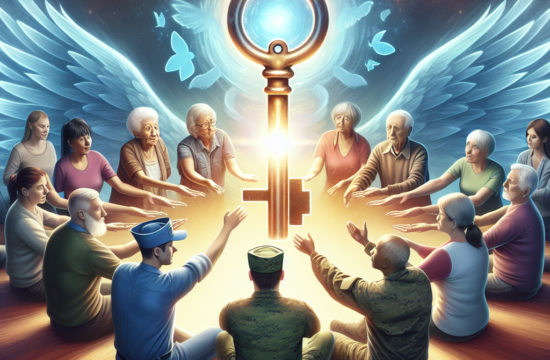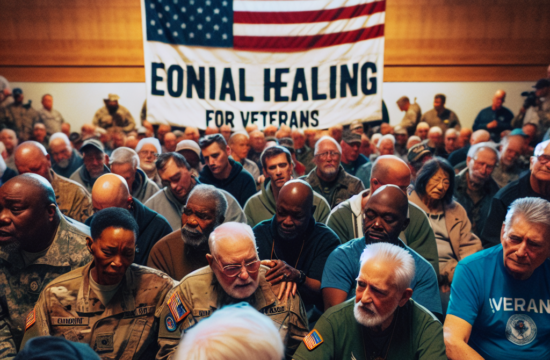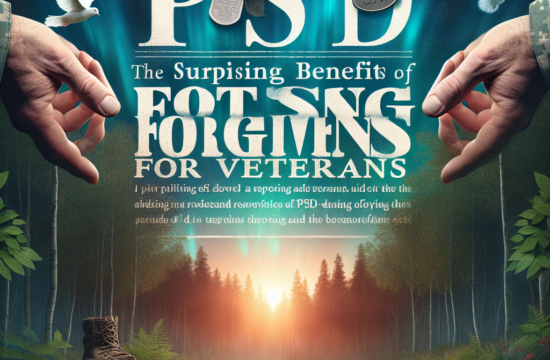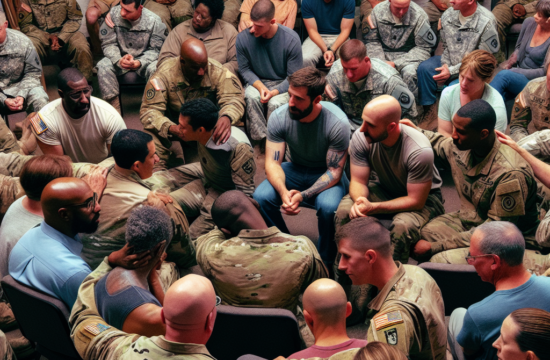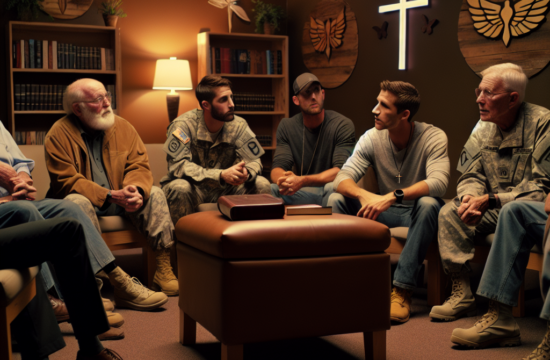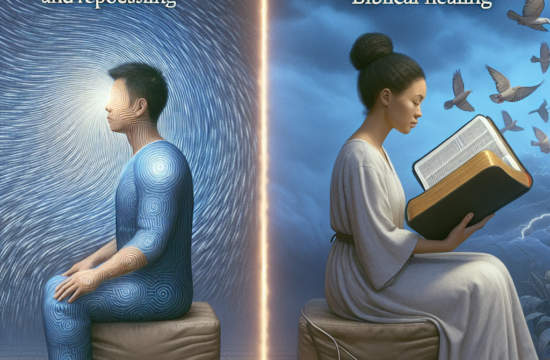==> Thank you for reading this post! Click Here If you are looking for support and Victory over PTSD.
Understanding PTSD in Veterans
What Is PTSD?
Post-Traumatic Stress Disorder, commonly known as PTSD, is a mental health condition that’s triggered by experiencing or witnessing a traumatic event. For veterans, this could stem from combat experiences, the loss of comrades, or intense situations that they’ve faced while serving. Understanding this condition is the first step in addressing it effectively.
PTSD manifests in various ways, including flashbacks, nightmares, and severe anxiety. It can take a toll on daily life, affecting relationships, work, and overall well-being. This deep-rooted response to trauma changes how veterans perceive the world and themselves, significantly impacting their mental health.
It’s important not just to identify symptoms but to create an environment where veterans feel safe to express these feelings. The more we talk about PTSD, the more we can help normalize the conversation and encourage healing.
How Common Is It?
Statistics show that PTSD affects a significant percentage of veterans. According to recent studies, nearly 30% of Vietnam War veterans have experienced PTSD at some point in their lives. This number may vary with different conflicts, but the underlying struggles remain similar across generations.
This prevalence emphasizes the need for awareness and accessible mental health resources for veterans. The more we understand how frequent these issues are, the better prepared we can be to support those who have served.
The discussion around PTSD shouldn’t be limited to just numbers; it needs to include personal stories and experiences to highlight the real impact on individuals and families. That’s where community support comes in — we can all do our part to make a difference.
The Impact of Trauma on Overall Well-Being
Trauma doesn’t just affect mental health; it has a ripple effect on physical health and emotional well-being. Veterans might find themselves grappling with chronic pain, substance abuse, or other illnesses exacerbated by untreated PTSD. It’s a stark reminder of how interconnected our health is.
Moreover, relationships often take a hit. Loved ones may not understand what the veteran is going through, leading to feelings of isolation and frustration on both sides. Encouraging open dialogue about these challenges can strengthen bonds and lead to healing.
Recognizing this impact is crucial for veterans. It allows them to approach healing more holistically, addressing not just the mind, but also the body and spirit. That’s where tools like prayer can play a comforting and grounded role in the recovery process.
The Role of Prayer in Healing
Spiritual Connection and Support
For many, prayer serves as a profound source of solace and strength. It’s an opportunity to connect with something greater than ourselves, tapping into a spiritual resilience that can be incredibly powerful. Whether it’s seeking guidance or simply finding peace, prayer offers a tool for inner reflection.
Creating a daily routine that incorporates prayer can help veterans establish a space for themselves to process emotions safely. It opens doors to deeper understanding and acceptance, fostering a sense of community with others who pray.
My personal experiences affirm that prayer doesn’t have to be religious; it can just be a moment of quiet introspection. It’s about finding a ritual that resonates personally and integrates smoothly into one’s life.
Prayer as a Therapeutic Tool
Studies have highlighted that prayer can have therapeutic effects, reducing stress and enhancing well-being. Engaging in prayer has been shown to lower blood pressure and improve mood. This isn’t just happenstance; there’s a tangible science behind the calming effects of prayer and meditation.
For veterans dealing with PTSD, using prayer as a therapeutic tool can create a safe space to confront pain and distress. It feels less daunting when you can take a moment to find peace before tackling your daily challenges.
It’s also about creating routines that promote mental health. Pairing prayer with other therapeutic practices, like counseling or support groups, can amplify the benefits immensely.
Community and Shared Prayer
Another beautiful aspect of prayer is its ability to bring people together. Shared prayer among veterans or within communities builds a sense of camaraderie and support. This connection is crucial; after all, healing can often feel less isolating when we realize we’re not alone.
Group prayer meetings can foster openness and vulnerability, allowing veterans to share their experiences in a supportive environment. This process not only validates their feelings but also enhances the healing journey through collective strength.
Get Support and Help with Recovery! Visit us for more Information and Support
Personally, I’ve seen how powerful community prayer can be in creating bonds. It nurtures an environment where warriors can share their burdens and uplift each other simultaneously, reminding us all of our shared humanity.
Practical Steps for Veterans
Incorporating Prayer into Daily Life
Integrating prayer into everyday life doesn’t have to be a monumental task. Start small—perhaps with morning gratitude or evening reflections. Allow prayer to flow naturally, evolving into a consistent practice that feels right for you. It’s about making your journey meaningful.
Personalizing your prayer practice also matters. Whether it’s through journaling, meditating, or simply sitting quietly, find what resonates with you. The goal is to create a meaningful ritual that encourages reflection and relaxation.
Having a dedicated space for prayer in your home can also enhance the experience. This could be as simple as a comfortable chair in a quiet corner or a small altar with meaningful items. Creating an inviting atmosphere signals your mind that it’s time to reconnect and heal.
Seeking Professional Help
While prayer is a powerful tool, it’s essential to recognize when professional help is needed. Mental health professionals can offer support and strategies that prayer alone might not provide. Therapy can complement your spiritual practices beautifully.
Don’t hesitate to seek resources; there are counselors who specialize in working with veterans. They understand the unique challenges faced and can provide tailored support for healing in a holistic way.
It’s all about balance—using both prayer and professional guidance to pave the road to recovery. You don’t have to go it alone; there are resources available eager to help.
Building a Supportive Environment
Support is key when navigating PTSD. Building a circle of understanding friends and family can create a safe space to share struggles and celebrate victories in recovery. Encourage open conversation about mental health to foster understanding and compassion.
Also, consider reaching out to veteran organizations that provide camaraderie, support, and resources. These groups can introduce you to others who are facing similar challenges, making the healing process feel less daunting.
Remember, you’re not in this fight alone. Building connections and seeking support can create a tapestry of resilience and strength in your healing journey.
Conclusion: Embracing the Journey Together
The journey through PTSD is undoubtedly challenging, but incorporating the healing power of prayer can offer comfort and guidance along the way. Veterans deserve acknowledgment of their struggles, as well as the tools to aid in their recovery. Embracing both spiritual practices and the supportive community can foster healing and wholeness.
Let’s normalize conversations around mental health, uplift one another, and recognize the collective strength of community and prayer in this eternal journey toward healing.
FAQ
1. What is PTSD and how does it affect veterans?
PTSD is a mental health condition triggered by traumatic experiences. For veterans, this can stem from combat or other military-related experiences, leading to symptoms like flashbacks, anxiety, and emotional distress.
2. Can prayer actually help with PTSD?
Yes! Many find that prayer offers comfort, grounding, and a spiritual connection that can help ease anxiety and promote overall well-being, making it a complementary tool in healing.
3. How can I incorporate prayer into my daily routine?
Start small—consider morning gratitude or reflective moments before bed. Create a peaceful environment for prayer, allowing it to evolve naturally into your daily life.
4. Is professional help necessary if I’m using prayer?
While prayer is valuable, seeking professional help is crucial for comprehensive healing. Therapy can provide guidance and strategies that support your spiritual practices.
5. How can I find support as a veteran?
Building a network of understanding friends and family, as well as connecting with veteran organizations, can offer the support needed to navigate the challenges associated with PTSD.






